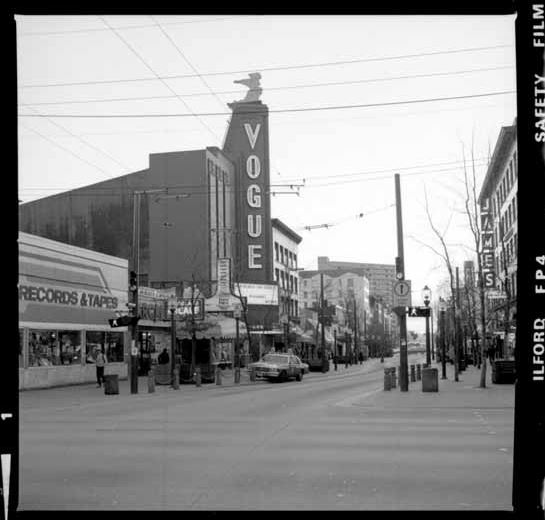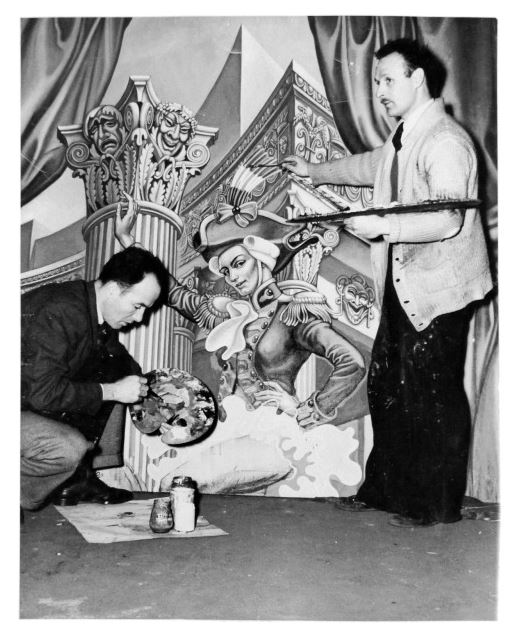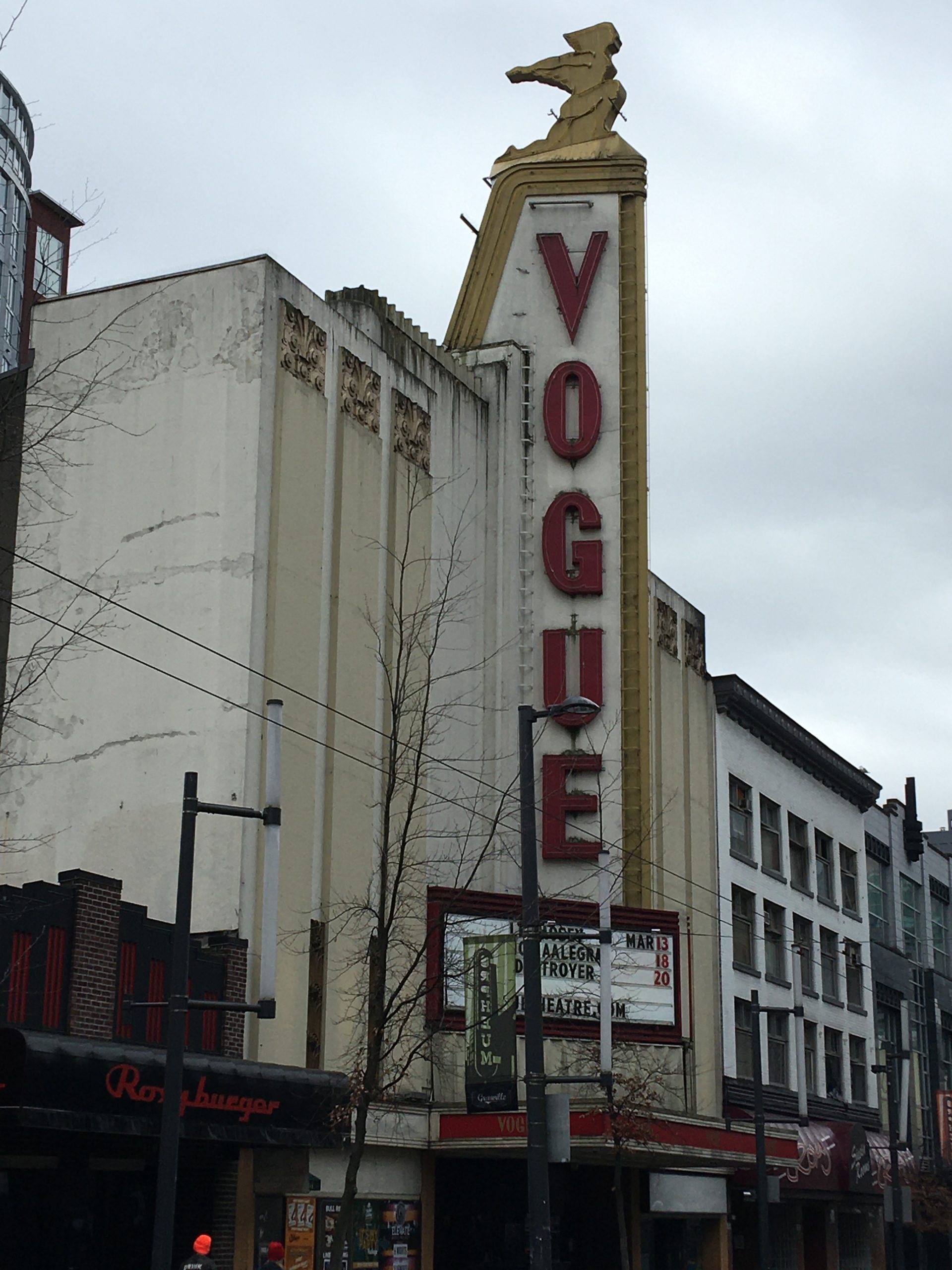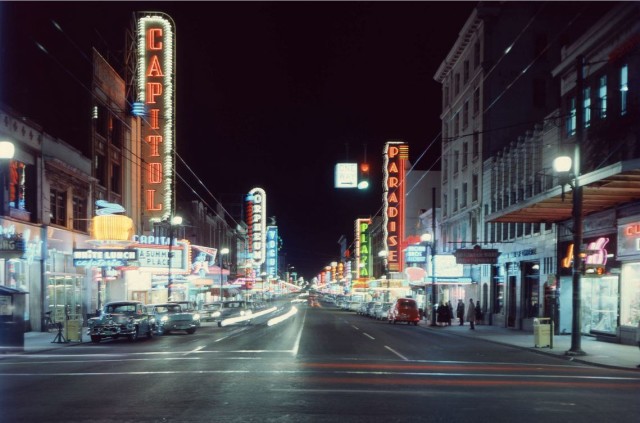The Oak Theatre sat at Kingsway near Royal Oak Avenue in Burnaby from 1937 to 1963.
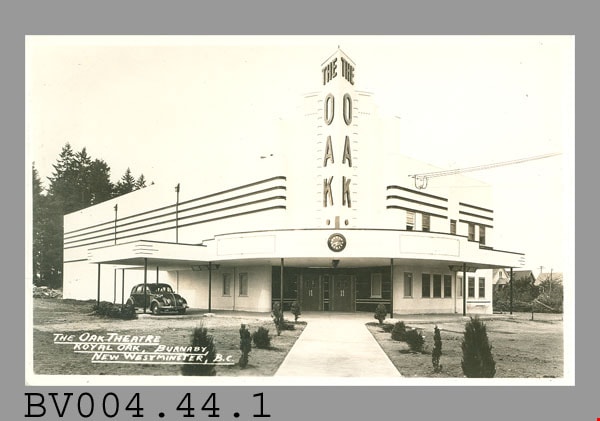
Opening night with CKWX’s Billie Browne, was August 4, 1937. He introduced feature film White Bondage, comedy shorts Blonde Bomber and Hotel a la Swing, and a cartoon called Porky’s Building.
Among the details shared in Vancouver Sun and Province stories of the day were an electric fireplace, an aquarium for goldfish, a 12-foot ceiling mirror, and a full-time attendant who would park your Buick, Chevy, Cadillac or Ford DeLuxe Roadster—free of charge.
Ear phones had been installed for those who were hard of hearing and more accustomed to silent movies.
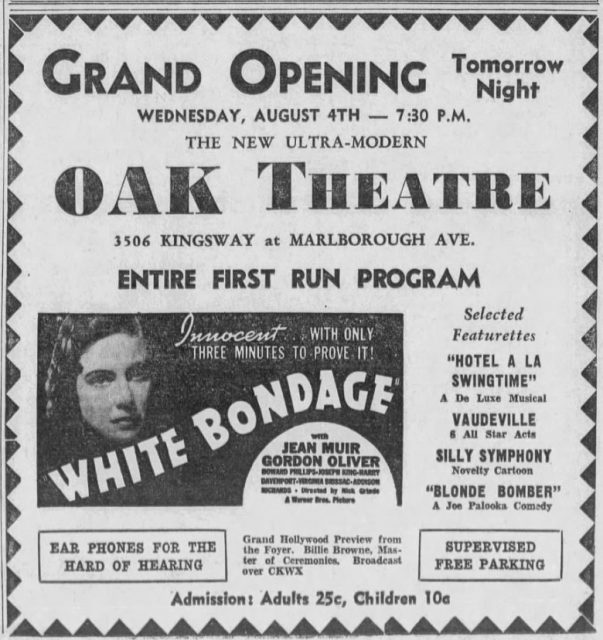
Andy Digney:
New owner Andy Digney, had recently arrived in Vancouver from Brandon, Manitoba where he promoted silent pictures. When talkies came in, he started up the first 25-cent movie theatre.
In 1937, the 750-seat theatre was surrounded by firs – situated halfway between Vancouver and New Westminster, and blanketed by Mrs. Digney’s shrub and flower gardens.
The Digney’s took a lot of pride in their theatre and would greet their patrons before and after the show. Andy was known to jump in his car to fetch a wheel-chair bound customer, who otherwise couldn’t get to the theatre.
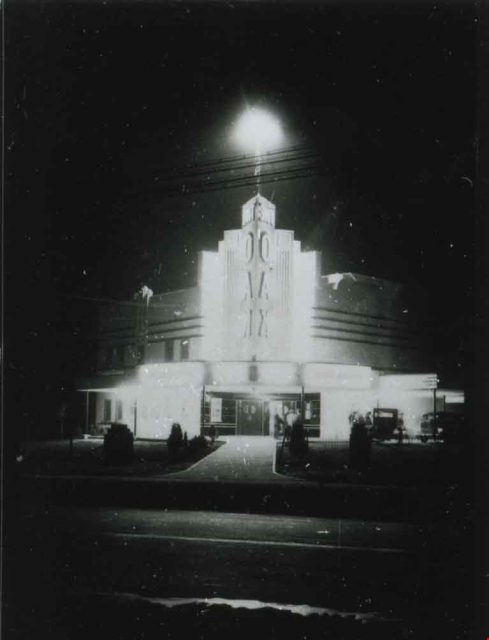
Digney sold the Oak Theatre to Odeon Theatres Canada in 1945, making it their 28th theatre in British Columbia.
The next article I could find was a brief about the RCMP raiding a bingo game held at the theatre in January 1962.
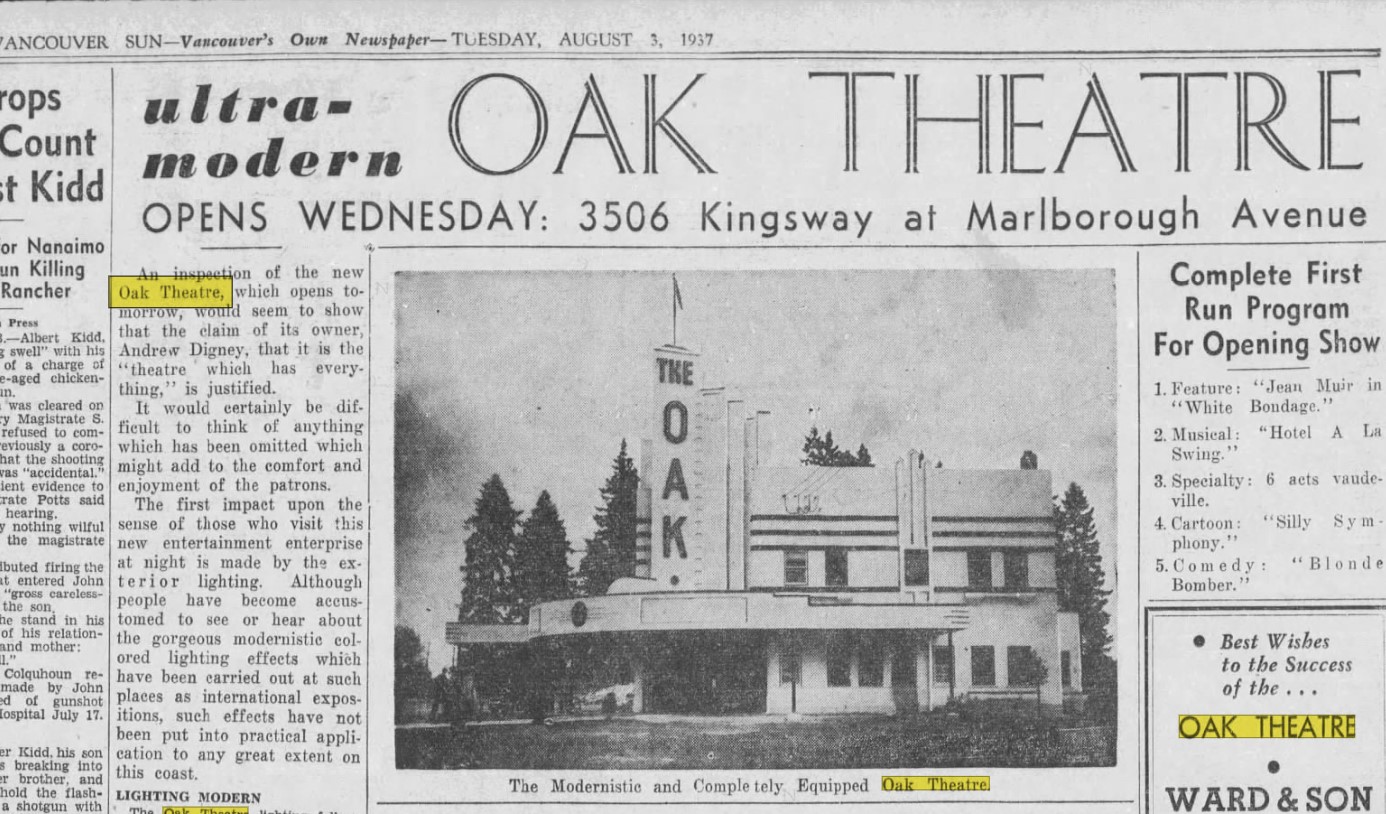
The theatre closed in 1963.
Related:
- Queenie Albanuff and the Odeon Theatre on Lonsdale
- Lynn Valley’s Cedar V Theatre
- Vancouver’s Missing Theatres
© All rights reserved. Unless otherwise indicated, all blog content copyright Eve Lazarus.



